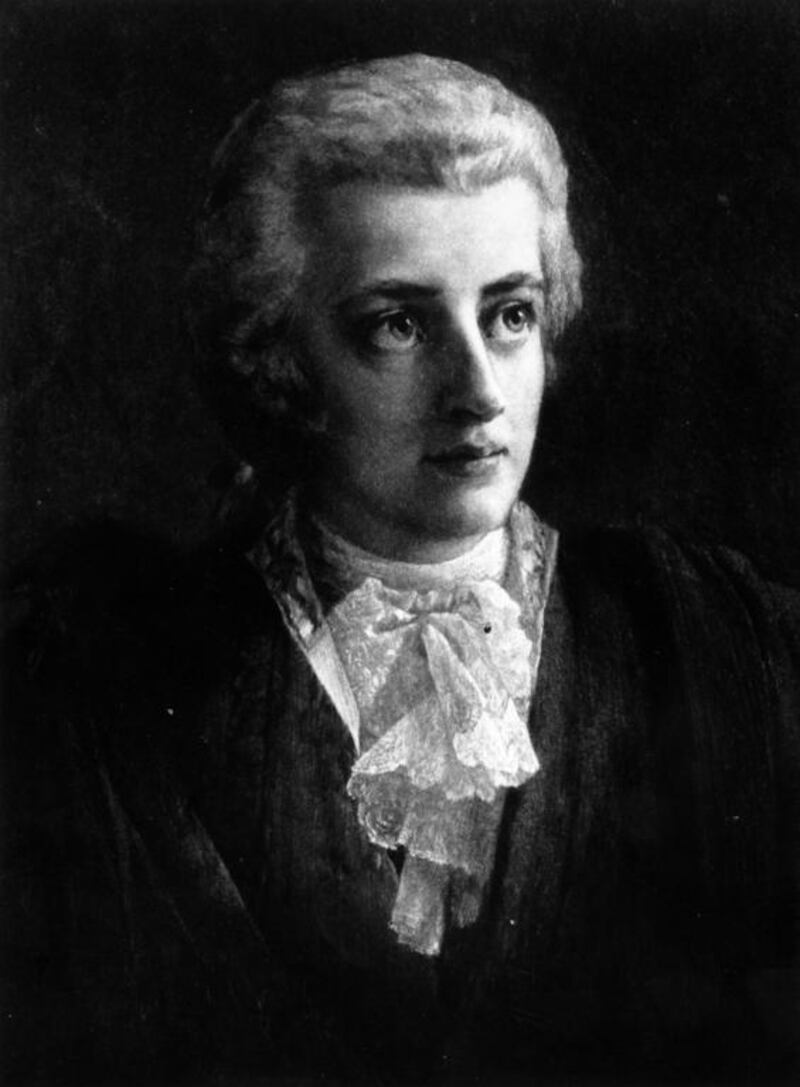On December 5, 1791, Wolfgang Amadeus Mozart’s frail body finally gave out at the tender age of 35 to a fever that had been plaguing him for two months.
The Austrian left behind more than 600 compositions, including 41 symphonies (maybe more), 27 piano concertos, 22 operas and 23 string quartets – a staggering number of works considering he hadn’t even reached middle age.
Tomorrow night, September 23, the Vienna Concert-Verein round off their two-night stand at the Dubai Opera with a programme packed with the composer's later works, including arias from operas The Magic Flute (1791), Don Giovanni (1787) and No 41 (1788), his final symphony.
While the enchanting evening will no doubt be tinged with some sadness at all that lost potential, one wonders what would have become of Mozart had he lived to the same age as Joseph Hadyn (77), Igor Stravinsky (88) or even American composer Elliott Carter (103).
If so, the seminal works performed in Dubai would remarkably be the product of a man, only half way through his career.
By the age of 68 he might have found himself invited to the Theater am Kärntnertortheater in Vienna to witness the premiere of Beethoven's groundbreaking Symphony No 9.
Or even more fantastical, had he got over his aversion to Paris ("I am living among brutes and beasts as far as musique is concerned," he petulantly wrote to his father in 1778, while staying in the city), he may even have heard Hector Berlioz's Symphonie Fantastique (1830 ) at the ripe old age of 74.
Of course, musical influence can travel in both directions. How might an octogenarian Mozart have changed the course of Ludwig van Beethoven’s music? Or Franz Schubert’s, for that matter? There are some who argue that – like rock stars Jimi Hendrix and Kurt Cobain – it was only through dying young that Mozart became an icon.
Certainly, in the years following his death, his popularity increased considerably. Numerous concerts were performed in his honour and books of his sheet music eagerly exchanged hands.
One thing is for sure: these later works that will be performed by the Vienna Concert-Verein, conducted by James Judd, show some significant stylistic changes that hint at a variety of possible futures.
Mozart's earlier works – such as his Violin Concerto No 3 in G major (1775), which is performed in the Dubai concert by violinist Jan Mracek – display the typical classical-era formula for ideal music.
A contemporary of Mozart, Baldassare Galuppi, described it as: “Vaghezza, chiarezza, e buona modulazione” (charm, clarity, and good melody).
This was the goal of the enlightenment-era composer, and one to which Mozart aspired.
However, in both the overture to Mozart's opera Don Giovanni, and the penultimate scene in which the anti-hero, Don Giovanni, himself descends into hell, Mozart delves into much darker, macabre territory – something the next generation of Romantic composers, such as Frédéric Chopin, would embrace with gusto.
Another one of Mozart’s deviations was the way he worked with his librettist.
He found contemporary operas boring, too simple and unrefined. To get the music and words in perfect harmony, he constantly reworked the libretto as he went along – something only a few librettists put up with.
The result was his final operas – The Marriage of Figaro (1786), Don Giovanni and The Magic Flute – which display a complex and perfectly balanced mixture of pathos and comedy.
He developed an entirely new psychological landscape – one that was far more ambiguous and real.
In moments of joy, there can be perceived hints of sadness. In characters who are consumed by power, you actually sense a slight madness.
Where could Mozart have taken us, had he developed opera writing further down this path?
Another hint into Mozart's fantasy future lies in the Symphony No 41 – otherwise known as the "Jupiter" symphony.
A gifted melodist, Mozart’s symphonies are packed with them, tune after tune rolling along like chocolates on a factory conveyor belt.
Yet at that time, the trend in Vienna – of which Haydn, Mozart’s elder friend, was a master – was actually moving towards the opposite; whole symphonies constructed out of only a few fragments of material.
The mastery was in showing how you could transform this handful of notes into larger sections and then entire movements that passed through differing emotional terrains.
It is something that Beethoven took to a new level in his own works. Mozart only started to get to grips with this technique himself in his last few symphonies, so it’s fascinating to wonder how far he might have continued down this path.
Then again, some argue that it is not when you die that’s important, but when you are born.
The older Baroque composer, JS Bach, lived well into the 18th century, dying at the age of 65 in 1750. Yet he never adopted the simpler gallant style of the next generation, which came into fashion around 1720. Instead, he opted to develop and refine the path he was already on.
Would we be saying the same about an 80-year-old Mozart?
Sadly we’ll have to leave it to novelist and filmmakers to answer that one.
• Mozart Gala by the Vienna Concert-Verein is at Dubai Opera on Friday, September 23 at 8pm.Tickets begin from Dh500 from www.dubaiopera.com
artslife@thenational.ae





